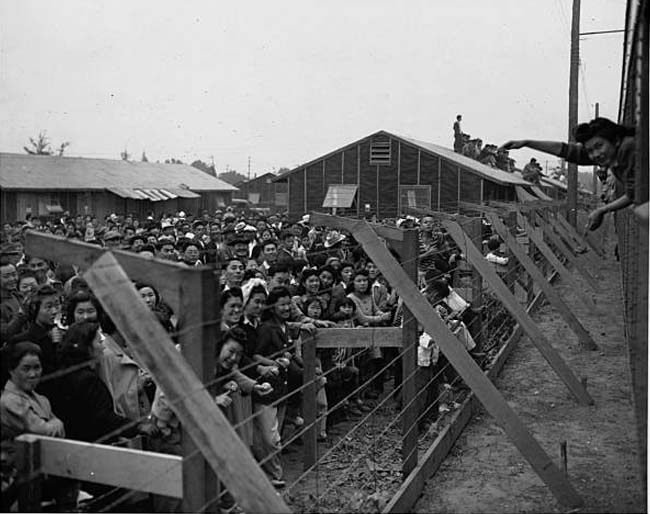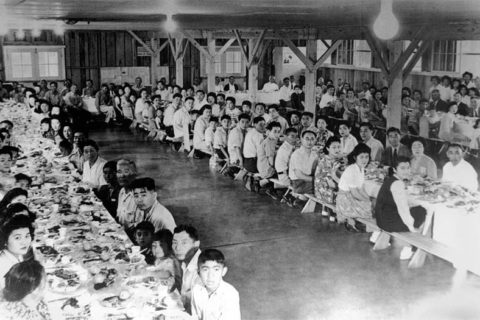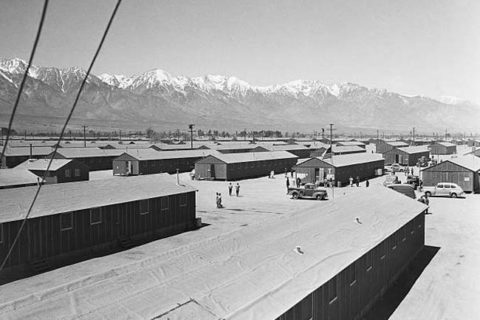During World War II, there were three types of camps for Japanese-American civilians in the United States. One of them is Relocation Centers that are now known as internment camps. Here is the list of internment camps for Japanese according to Wikipedia.

1. Gila River War Relocation Center
This was an American concentration camp which was located in Arizona. This was one of some camps which was built by the War Relocation Authority during the Second World War for the incarceration of Japanese Americans from the West Coast. The location was within the Gila River Indian Reservation near the town of Sacaton. The peak population was 13,348 and it became the fourth-biggest city in the state where it operated from May 1942 to November 16th, 1945.
Some of the notable internees in this camp were George Aratani, an entrepreneur and philanthropist; Masumi Hayashi, an American photographer and artist; and Dale Ishimoto, an American actor.
2. Granada War Relocation Center
This relocation center was known as Camp Amache by the internees. This relocation center was a concentration camp for Japanese Americans in Prowers County, Colorado. After the Japanese attack on Pearl Harbor that happened on December 7th, 1941, Japanese Americans on the West Coast were arrested and sent to remote camps. On May 18th, 1994, the camp was listed on the National Register of Historic Places. Then, on February 10th, 2006, it was set as a National Historic Landmark.
Some of the notable internees in this camp were Kaneji Domoto, an architect and landscape architect; Mike Honda, an American politician; and George Yuzawa, a community activist.
3. Heart Mountain War Relocation Center
It was located midway between the northwest Wyoming towns of Cody and Powell. This concentration camp was used for the internment of Japanese Americans who were evicted during World War II from their local communities in the West Coast Exclusion Zone after the bombing of Pearl Harbor in December 1941.
Before the war, this site was managed by the federal Bureau of Reclamation and it was aimed to be the site of a major irrigation project. However, in June 1942, around 650 barracks and also guard towers were built. On August 11th, the camp opened when the first Japanese Americans were shipped in by train from the internment program’s “assembly centers” in Pomona, Santa Anita, and Portland. The peak population was 10,767 and it became the third-biggest town in Wyoming.
Hideo Date, a painter; Bill Hosokawa, an author and journalist; and Robert Kuwahara, an animator were some of the notable internees in this camp.
4. Jerome War Relocation Center
This was a Japanese American internment camp where the location was in southeastern Arkansas. It was near the town of Jerome in the Arkansas Delta. It opened from October 6th, 1942 to June 30th, 1944. It became the last American concentration camp to open and the first one to close. After this camp was closed, it became a holding camp for German prisoners of war.
Lawson Fusao Inada, an American poet; Theodore Kanamine, a United States Army brigadier general; and Horace Yomishi Mochizuki, a mathematician, were some of the notable internees in this camp.
5. Manzanar War Relocation Center
This camp was located at the foot of the Sierra Nevada mountains in California’s Owens Valley. This camp held over 10,000 inmates at its peak. In March 1942, the first Japanese Americans arrived at Manzanar. The camp operated from 1942 to 1945. The Manzanar National Historic Site preserves and interprets the legacy of Japanese American incarceration in the United States. The United States National Park Service identified the Manzanar National Historic Site as the best-preserved of the ten former campsites.
6. Minidoka War Relocation Center
During World War II, there were more than 13,000 Japanese Americans who were incarcerated at this relocation center. It was located in the Magic Valley of south central Idaho in Hunt, of Jerome County. At its peak, around 9,397 Japanese Americans were housed in this relocation center, mostly from Washington, Oregon, and Alaska.
This relocation center had 44 blocks of housing and each block had 12 barracks, bathrooms, laundry facilities, and a mess hall.
Now, it becomes Minidoka National Historic Site which is managed by the National Park Service of the U.S. Department of the Interior.
Kichio Allen Arai, an architect; Paul Chihara, an American composer; and May Mayko Ebihara, an anthropologist were some of the notable inmates in this camp.
7. Poston War Relocation Center
It was located in Yuma County in southwestern Arizona. In terms of area, it was the largest one compared to the 10 American concentration camps operated by the War Relocation Authority during World War II. It consisted of three separate camps that were arranged in a chain from north to south. The camps were named Roasten, Toastin, and Dustin by internees based on their desert locations. There were over 17,000 combined peak populations of the Poston camps and they mostly came from Southern California.
Frances Hashimoto, a businesswoman and community activist; James Kanno, a mayor of Fountain Valley, California from 1957-1962; and Doris Matsui, a member of the U.S. House of Representatives were some of the notable internees in this camp.
8. Rohwer War Relocation Center
This Japanese American concentration camp was located in rural southeastern Arkansas, in Desha County. It operated from September 18th, 1942 until November 30th, 1945. This camp held around 8,475 Japanese Americans who were evacuated from California. In 1992, it was declared a National Historic Landmark.
Ruth Asawa, a Japanese American sculptor; Takayo Fischer, an American actress; and Aiko Herzig-Yoshinaga, a political activist were some of the notable internees in this camp.
9. Topaz War Relocation Center
This camp held Americans of Japanese descent and immigrants who had come to the United States from Japan, called Nikkei. This camp was also known as the Central Utah Relocation Center and briefly as the Abraham Relocation Center. In September 1942, this camp was opened and then in October 1945, it was closed. Most people who were incarcerated in this camp were from the Tanforan Assembly Center and formerly lived in the San Francisco Bay Area. There were around 9,000 internees and staff and made Topaz the fifth-biggest city in Utah at the time.
10. Tule Lake War Relocation Center
It was located in California. After it was used for a while, in 1943, it was renamed the Tule Lake Segregation Center and it was used as a segregation camp which had a maximum security to separate and hold those inmates who were considered not loyal or to bother the operations of other camps. This Segregation Center had around 18,700 inmates at its peak and over the four years it was open, there were 29,840 people who were held there. On March 20th, 1946, the camp was closed.
Hiroshi Honda, an American painter; Shizue Iwatsuki, a Japanese American poet; and Fujimatsu Moriguchi, an America businessman were some of the notable inmates in this camp.

A bookworm and researcher especially related to law and citizenship education. I spend time every day in front of the internet and the campus library.

